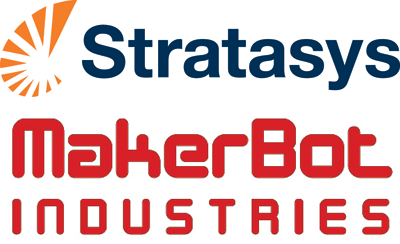
A report on TechCrunch proposes that MakerBot is in talks with Stratasys “regarding a possible acquisition”. The report says “persistent rumors of a sale or new funding have followed the company this year”.
The report also says MakerBot has been seeking investors with a goal to raise USD$25M by valuing the company at USD$300M.
Is this for real? Let’s first think about the potential acquisition.
Why It Makes Sense:
- Both companies use extruded plastic filament technology, originally invented by Stratasys and trademarked as “FDM”
- Stratasys’s low-end commercial 3D printers may be suffering losses from clients buying MakerBots instead of Stratasys gear
- Stratasys would like to continue to grow and MakerBot could provide another product line
Why It Doesn’t Make Sense:
- Stratasys has shown zero interest in addressing the consumer market thus far
- Stratasys’s business culture could not be farther away from MakerBot’s free-wheeling open source heritage
- Stratasys is already busy integrating their previous acquisition, Objet
- Stratasys’s business model involves sole-source premium-priced plastic filament, while filament sales are peripheral to MakerBot’s business model and in fact, MakerBot’s machines accept any filament, including low-cost generic products
- MakerBot CEO, Bre Pettis, has publicly stated “We’re going nowhere” when asked about such an acquisition
- MakerBot has just opened a new factory, demonstrating long-term intention to continue manufacturing units
- MakerBot is too small to significantly change MakerBot’s bottom line
We’re thinking there is no such Stratasys acquisition in the works.
Meanwhile, the idea of MakerBot raising USD$25M makes much more sense. This follows the standard pattern of startup companies: raise money at a certain valuation and grow using that investment. Then raise more money at a higher valuation, since the company has grown. Everyone wins. MakerBot has already raised USD$10M, so they’re already executing this strategy.
MakerBot may sell the company to another investor someday, but we’d wait until it grows a lot more. Why sell now when there’s so much growth potential?
Via TechCrunch

